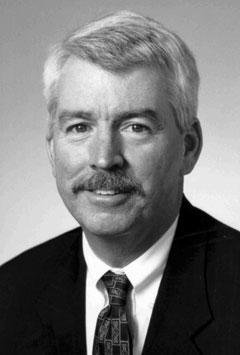Published: October 2006
Six weeks ago, New York’s Mount Sinai Medical Center released findings from medical examinations of 9,500 people who worked at Ground Zero after Sept. 11. Seventy percent of those responders had developed new or worsened respiratory conditions, reported the blue ribbon panel presenting the study. Among the 15 doctors and public health experts on the panel was Dr. Philip Landrigan ’63, who for nearly 40 years has been a leader in protecting children and adults from harmful environmental contaminants. A recent profile of Dr. Landrigan in the British medical journal The Lancet dubs him a “children’s health crusader” and notes, “Most people don’t think of Philip Landrigan when they fill up their car with fuel, but it’s thanks to him that leaded gasoline has become outlawed almost worldwide.”
Landrigan, who grew up in Boston, earned his M.D. at Harvard Medical School, was a resident at Boston’s Children’s Hospital, and earned additional degrees in occupational and industrial health at the University of London. He is married to Marie Magee Landrigan ’64.
Philip Landrigan recalls that when he first went to work for the U.S. Centers for Disease Controls (CDC) in 1970, ” Environmental health was not a term that really had reached public or medical consciousness.” At the CDC he was a co-founder of the National Center for Environmental Health and later was responsible for the creation of the Office of Children’s Health Protection at the EPA. He has performed groundbreaking work on the health consequences of asbestos, pesticides, lead, PCBs, and many other chemical toxins. Enactment in 1996 of the federal Food Quality Protection Act has been attributed to his report for the National Academy of Sciences, “Pesticides in the Diets of Infants and Children.” In addition to his current work studying the health impacts of 9/11, he directs the Mt. Sinai Center for Children’s Health and the Environment, where he is planning an epidemiological study that will follow 100,000 American children from conception to age 21 to study factors in the environment that affect health, development, and risk of disease.
- Brief biography with links to published articles
- NY Times article about 9/11 workers health study
- Transcript of NPR “Living On Earth” interview on the 9/11 study
- Video interview with Bill Moyers on environmental health
- U.S. Senate testimony in 2005 on bodily injury caused by asbestos exposure
- Joint editorial on international cooperation for children’s health

